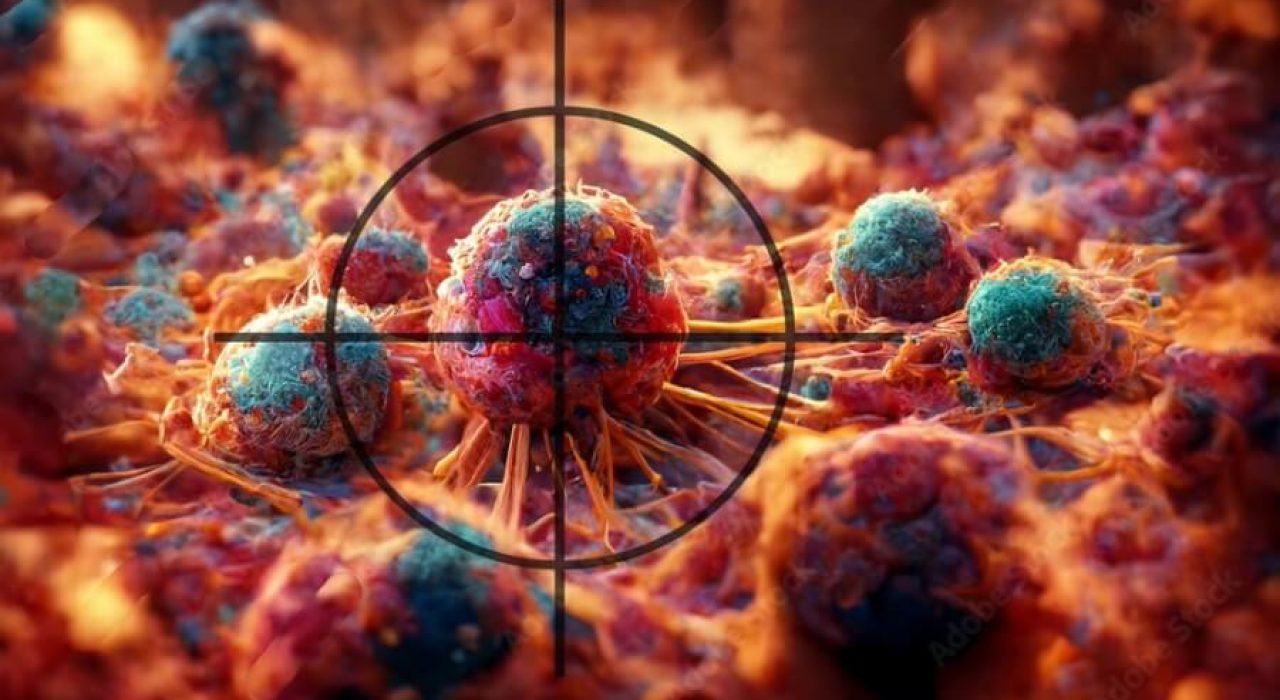What began with curiosity over a finding in a research paper has become something far more profound: a new class of drug with the potential to treat cancer and a powerful example of what’s possible when researchers across The University of Texas at San Antonio work together toward a common goal.

Cara Gonzales, DDS, PhD, a dentist-scientist and assistant professor in the School of Dentistry, and Stanton McHardy, PhD, a medicinal chemist, researcher and co-director at the university’s Center for Innovative Drug Discovery, have developed a promising compound called CIDD99. Their collaboration spans more than a decade and exemplifies the potential of multidisciplinary partnerships that are already shaping the future of the newly unified institution.
“This drug was conceived right here, at our own university,” Gonzales said. “And it would be a dream if we can one day see it used at the Mays Cancer Center for our patients in South Texas. That’s the full circle we’re working toward.”
A breakthrough born in collaboration

The journey began unexpectedly. While studying compounds that block pain pathways in oral cancer, Gonzales noticed that one of the pain blockers, capsazepine, also killed cancer cells.
After a research paper she read piqued her curiosity, Gonzales tested the compound’s molecular cousin, capsaicin, the spicy compound in chili peppers that is also reported to kill cancer cells. To her surprise, both showed anticancer effects and combining them made the results even stronger.
Around the same time, McHardy and his team, located at the university’s academic campus, launched a pilot program through the Center for Innovative Drug Discovery aimed at supporting researchers looking to develop novel therapeutic compounds. Gonzales submitted a pilot proposal, which the center granted.
The center’s chemists set to work designing more potent, novel and targeted versions of the parent compounds’ structure. Over 100 new compounds were synthesized. One of them, CIDD99, emerged as the most promising.
“Our initial studies were centered on pain,” said Gonzales. “But when we saw what CIDD99 could do to fight oral cancer, we knew we had to pursue it.”
What makes CIDD99 different?
Oral cancer, particularly human papillomavirus (HPV)-negative oral squamous cell carcinoma, is notoriously aggressive, painful and difficult to treat. The five-year survival rate hovers around 50%, and treatments have changed little in the past half-century, Gonzales said.
However, CIDD99 takes a new approach. The drug selectively blocks calcium signaling in cancer cells by targeting TRPC1, a protein that is overexpressed in tumor cells but not in healthy tissue. Early tests in animal models showed that CIDD99 reduced tumor volumes fivefold, with no observable side effects.
“What’s been most exciting is its tolerability,” Gonzales said. “The mice maintained their body weight, showed no cardio or liver toxicity, no respiratory issues and had no beha
vioral changes. That’s incredibly rare in early drug studies.”
What’s more, early results suggest CIDD99 may have broad applicability, showing potent anticancer effects in multiple cancer types including lung, breast, prostate, brain and endometrial cancers — many of which lack effective treatments.
A vision for commercialization
To advance CIDD99 to clinical trials, Gonzales co-founded a biotech startup called Keraceuticals Inc., named for her role as its founder. The company secured a phase 1 Small Business Technology Transfer grant from the National Institutes of Health to develop a safe, clinical-grade formulation, along with a new R03 grant that funds further study.
“This is a delicate time of our project. It’s where many promising compounds fail — what we call ‘the valley of death,’” she said. “That space between a great discovery and an actual therapy — this is where commercialization matters.”
In launching Keraceuticals, she leaned on university resources, mentorship and even went through the Texas Medical Center’s nine-month TMCi Accelerator program.
“Our Office of Technology Commercialization played a key role in developing CIDD99 by obtaining patents in the U.S., Europe and China, and assists investigators like me in formation of the company,” Gonzales added.
But her early success also speaks to a larger transformation underway. With the integration of UT Health Science Center at San Antonio and UTSA into the new UT San Antonio, this kind of mission-driven, translational work takes center stage.
“The intention of the university is to make lives better, and this project hits every part of that,” said Gonzales. “We’re talking about research, education, community impact and commercialization all in one.”
Long before the official merger, researchers like Gonzales and McHardy were already proving what unified science could look like. Their collaboration — one focused on solving real-world health problems through shared expertise — points to the kind of future UT San Antonio envisions: one that’s cross-disciplinary, commercially engaged and powered by discovery.
“This wouldn’t have happened without Stan’s team,” Gonzales said. “They knew the chemistry, the regulatory landscape and the formulation steps I never could have navigated alone. That’s what made this work.”
What comes next
With promising formulation data just returned and more studies underway, the team hopes to apply for a U.S. Food and Drug Administration Investigational New Drug designation within the next few years. If successful, CIDD99 could enter clinical trials soon afterward.
Gonzales acknowledged there is still a long road ahead, but it’s one paved with local expertise, institutional trust and bold ideas. And it all started with a question, a compound and two research teams that believed in working across boundaries.
“We didn’t just merge two institutions,” Gonzales said. “We’ve merged expertise with real-world impact to the benefit of our patients.”



